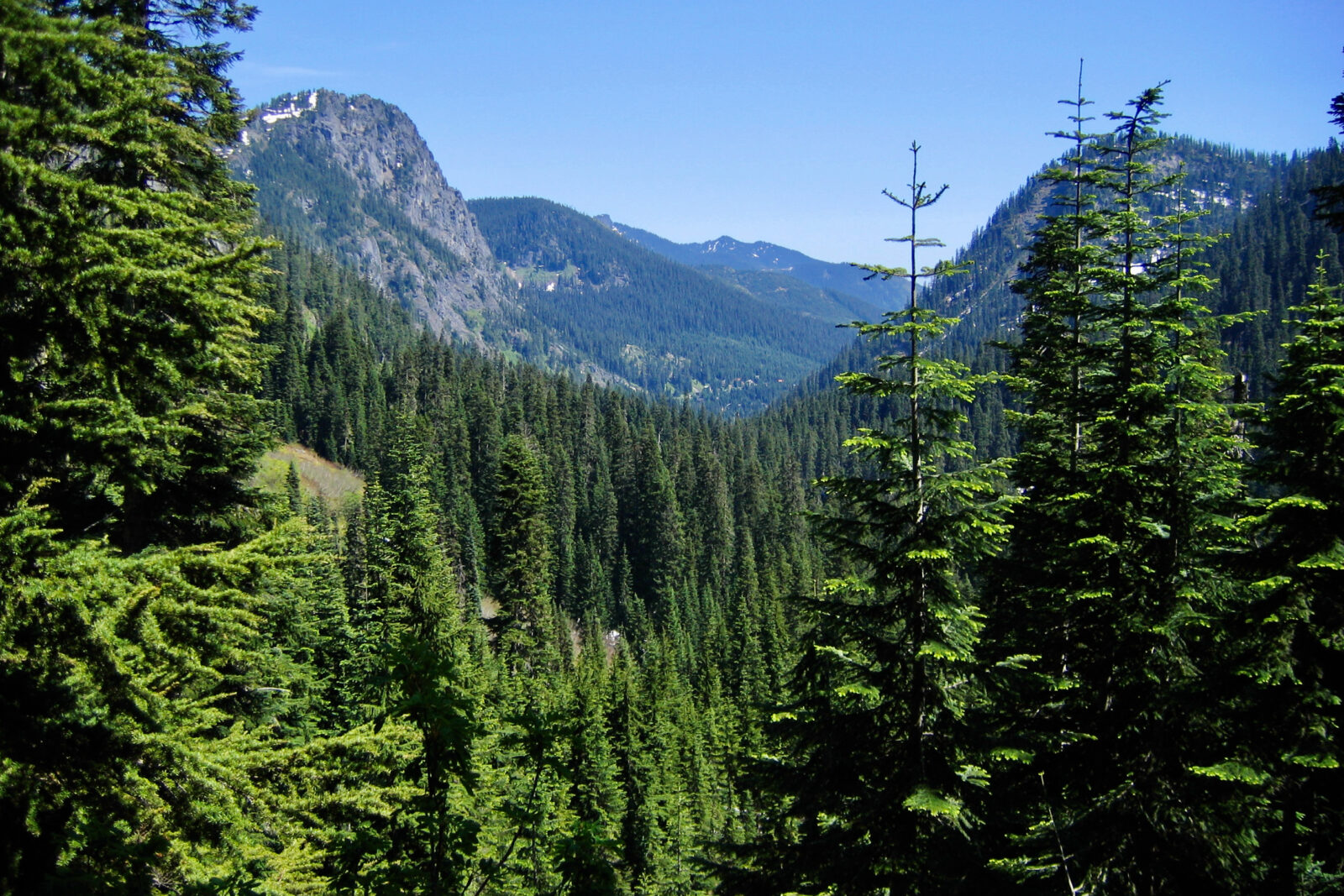This piece by Alex Craven originally appeared in the Northwest Passages community forum series in the June 10, 2023, edition of the Spokane Spokesman-Review.
By Alex Craven
When envisioning Washington’s public lands, many imagine scenic national parks like Mount Rainier or Olympic National Park. In reality, the National Park Service oversees a small fraction of public lands in the state. The biggest manager of federal public lands in the state is the U.S. Forest Service, which administers more than six million acres across national forests in the state. While those lands are publicly managed, they’re not operated exclusively, or even primarily, for outdoor recreation — quite the opposite. It may come as a surprise, but for most of its history, the Forest Service has been less focused on hiking and more on logging. But a new chapter of that history could soon begin — with big implications for Washington and the West.
The Forest Service as we know it was created by President Theodore Roosevelt. While the National Park Service, another land management agency with Rooseveltian roots, is part of the Department of the Interior, the Forest Service is part of the Department of Agriculture. This is an easily overlooked but crucial difference that has affected both agencies’ missions. NPS manages lands to facilitate nature access — the Forest Service manages lands to maintain timber resources.
That’s largely how the Forest Service operated for the past century — with public enjoyment of forests playing second fiddle to promoting timber. But 2023 could be the year the agency shifts how it values the forests it manages. Last year, President Biden directed federal agencies to “define, inventory, and protect” mature and old-growth forests on federal land as part of a strategy to mitigate the worst effects of climate change.
The Forest Service just made good on Biden’s commitment. First, it released a first-of-its-kind GIS tool, using sophisticated data to map mature and old-growth forests, watersheds and other places on Forest Service and Bureau of Land Management (BLM) managed land. Second, the Forest Service launched a process seeking public input on a possible administrative rule for preserving climate-resilient forests.
These are promising developments. The GIS project may become an important tool for federal staff to analyze the values of our country’s landscapes. The rule-making, however, isn’t as sure of a thing. It is vital that the Forest Service turn this proposal into reality while it has this opportunity. The science is clear: Older forests absorb and store more carbon than their younger counterparts. Moreover, these same older forests are generally more resilient to natural disturbances like wildfires. That makes them critical tools in the effort to take on climate change.
The last time an administration completed a major rulemaking process to conserve federal lands was two decades ago. The Clinton administration guided a process that generated a million comments and led to the creation of the so-called “Roadless Rule,” which identified and preserved more than 50 million acres of undeveloped land in national forests nationwide. If a forest area didn’t have an existing road, the rule held, it would take a darn good reason to build one. In the years since, the Roadless Rule has proven an effective tool for preventing the degradation of many wild places.
Preserving old-growth trees — and allowing mature forests to age into old-growth — is a straightforward management decision in an era of climate change. By protecting the forests that are most resilient in the face of a changing climate, we are also preserving vital habitat and important watersheds for cities and communities around the country while keeping the best carbon-absorbing forests intact to offset greenhouse gases.
Twenty years ago, a million people told the federal government they wanted meaningful, durable protections for undisturbed natural areas. Twenty years from now, we may look back at this rulemaking as the moment when federal forest management shifted from focusing on extraction to focusing on preservation — if we make our voices heard.
Alex Craven is a senior organizing representative with the Sierra Club. He lives and works in Seattle. Visit the original posting of this op/ed at the Spokane Spokesman-Review website.
Alpine Lakes Wilderness photo © 2006 Tommy Hough, all rights reserved. Not for republication.

